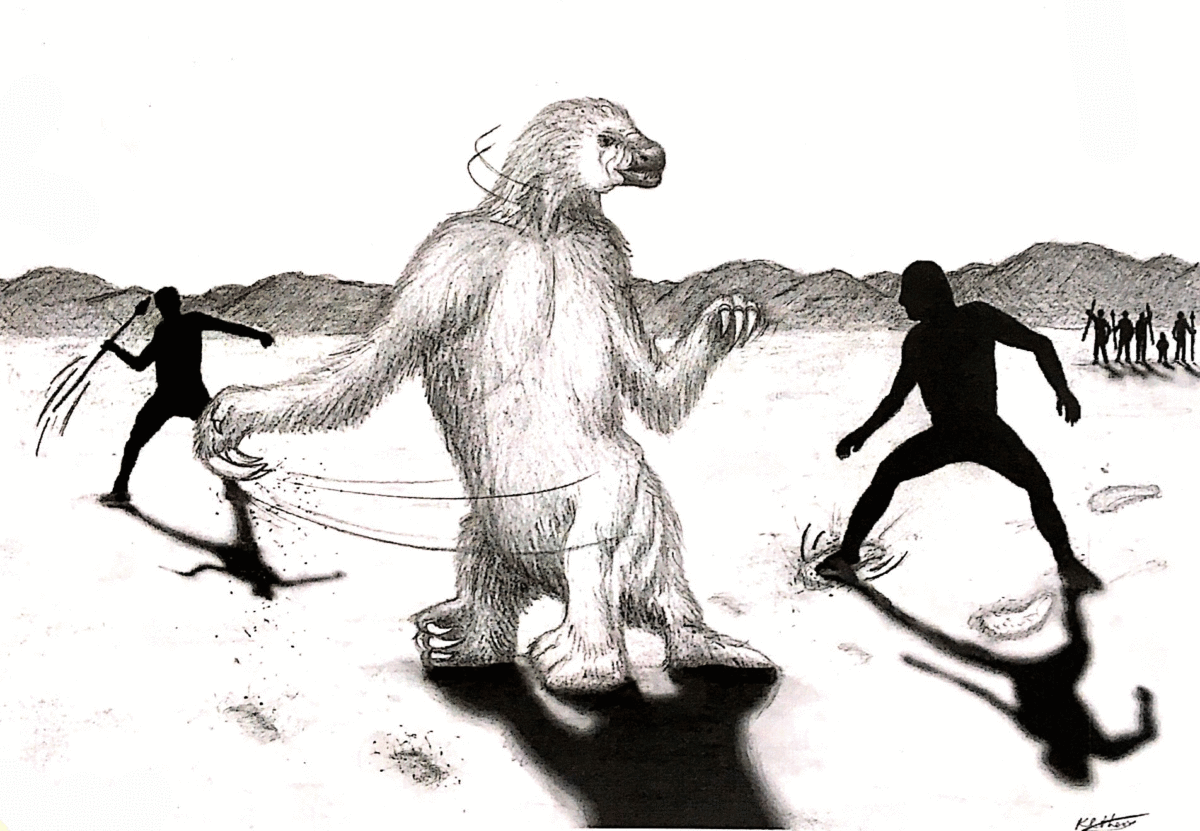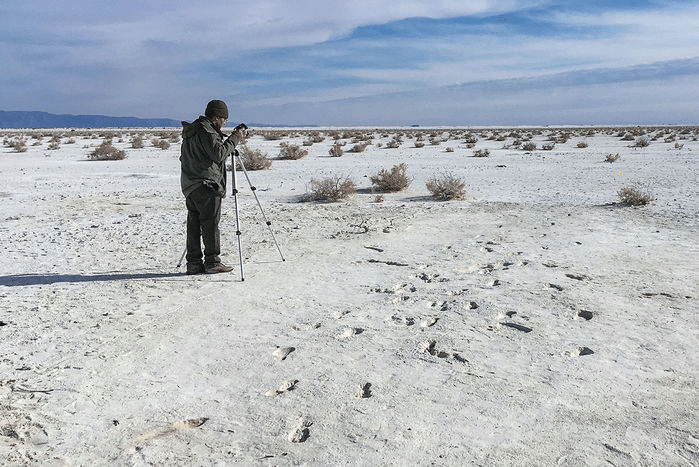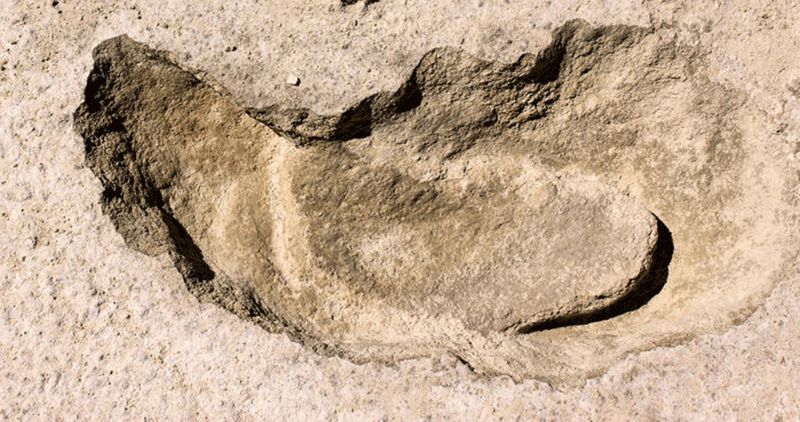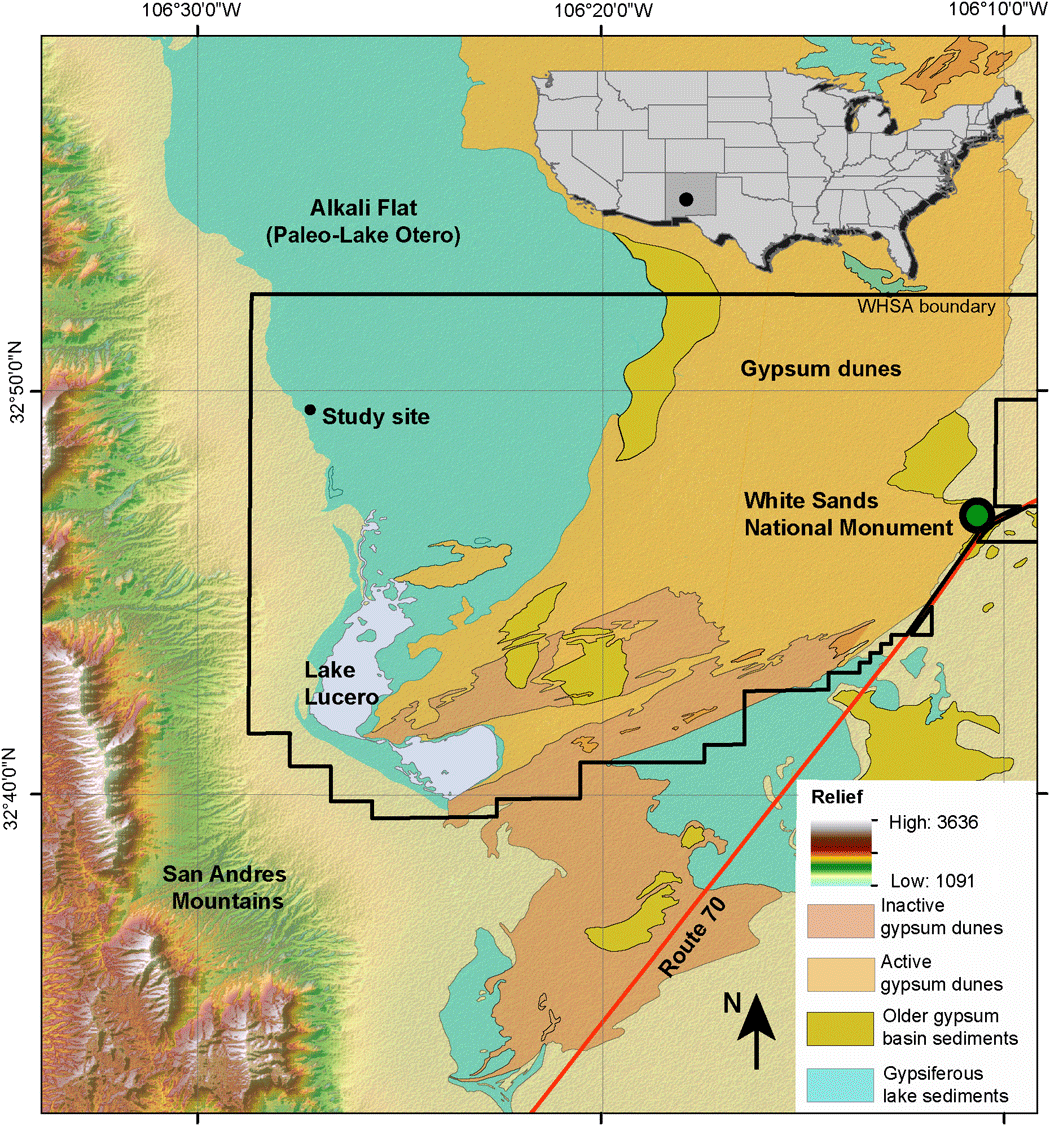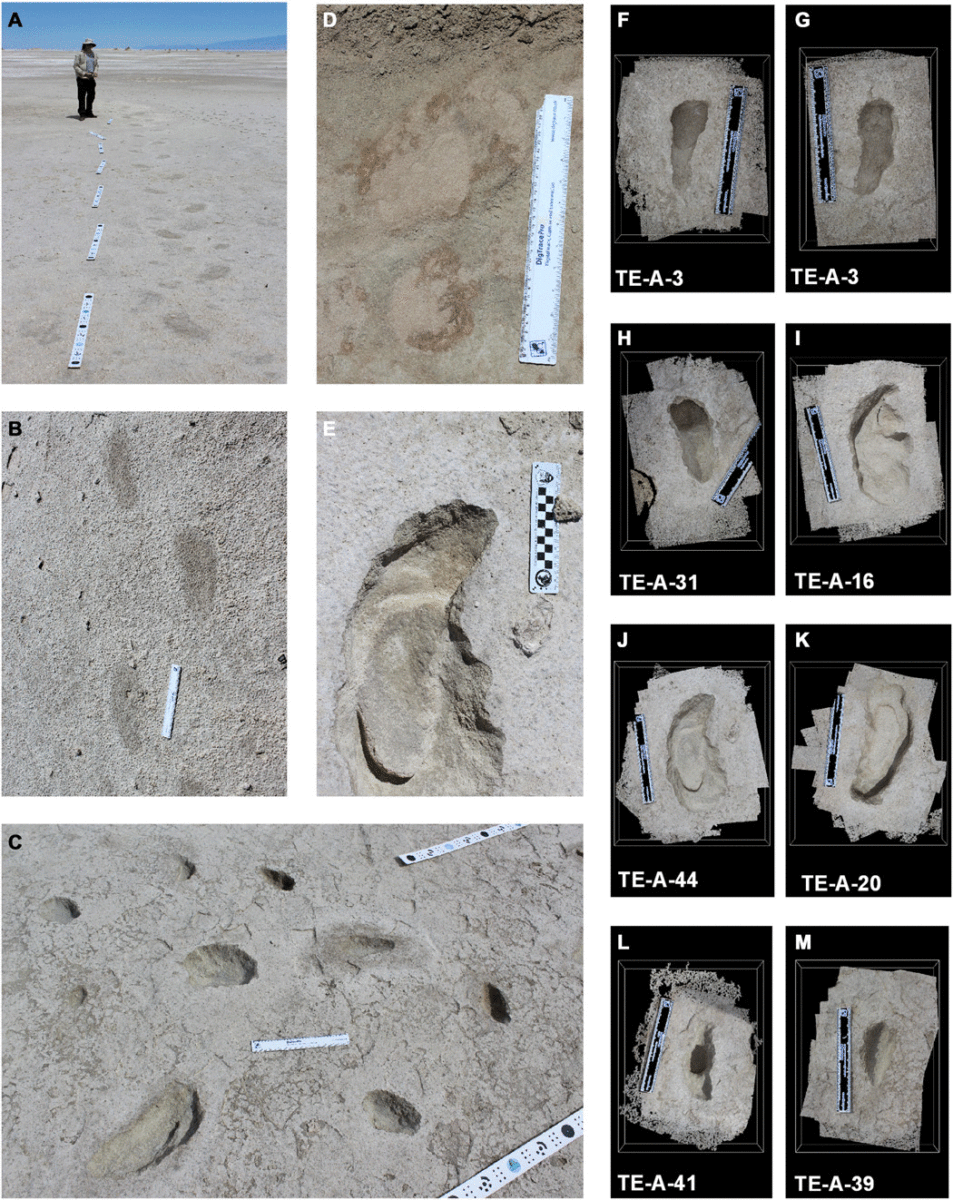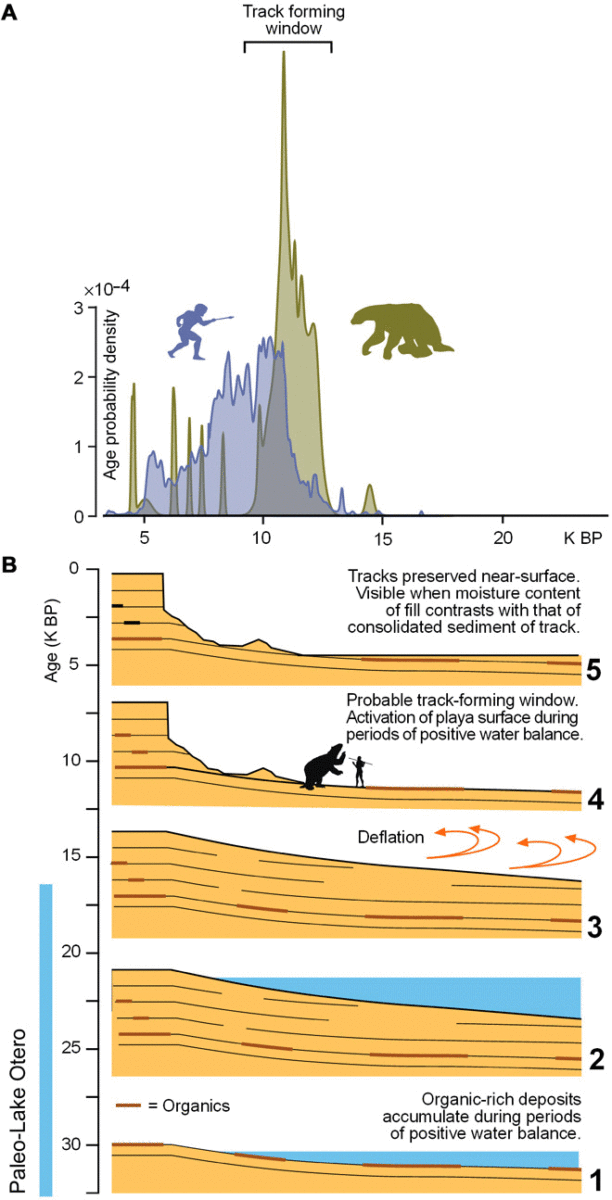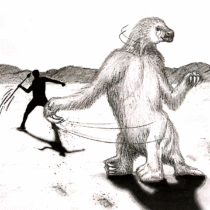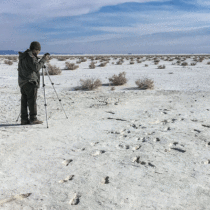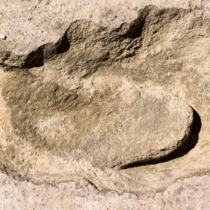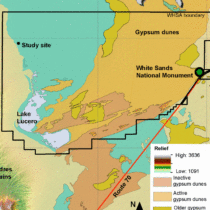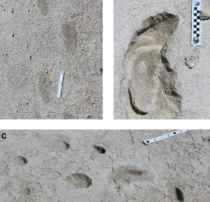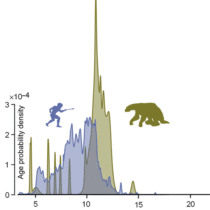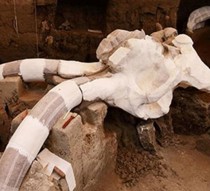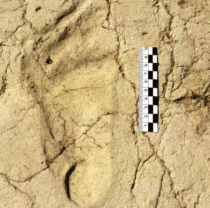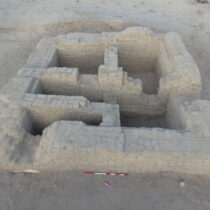Archaeologists examining a set of fossilized footprints believe the scene was where prehistoric humans hunted down sloths, leading perhaps to their extinction. The footprints date back 10,000-15,000 years and were found at a site that once was a lakeside landscape. Today the area is a vast salt flat, part of White Sands National Monument in southern New Mexico.
Researchers believe the evidence indicate that humans played a large role in driving large mammals such as sloths, mammoths and mastodons, to extinction.
The new study by a team of researchers studied the footprints and trackways by giant ground sloths. The animal would follow a straight or slightly curved path, unless human footprints are near, when it would turn sharply or stand on its hind legs. This perhaps shows that the animal was hunted and was trying to defend itself with its strong forelimbs. Human footprints inside the footprints of the giant ground sloths indicate that humans were stretching their legs to step into the sloth’s footprints, probably in a close chase.
The findings of the new study indicate that perhaps hunting by humans also contributed to the extinction of giant sloths, mammoths and other large animals.
The study has caused a debate among scientists, since some researchers believe that the set of footprints might have been in the specific structure due to other reasons than hunting. They say further investigations need to be carried out to support the assumption.
The study has been published in Science Advances.
